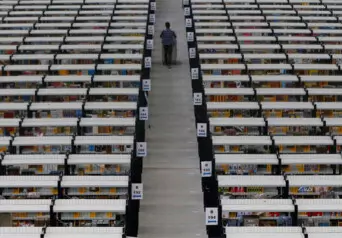Small Business Advocacy Amazon is not good for the labor force
Amazon's warehouse jobs are low-paying, stressful, and often temporary. The company values automation over employees.

- Post Date
- Sun, Aug 5
- Small Business Advocacy
Amazon has a workforce of over 540,000; and because of these numbers many municipalities, politicians and economists call it an engine of economic growth and often times give the online retailer major incentives to locate in their communities. However, eighty percent of these jobs are in their distribution and fulfillment centers (a system of warehouses, shelves, cubbies, chutes, and scanners), and while these jobs may lower the unemployment rate of an area (which may have been caused by Amazon in the first place as they put local retailers out of business), they more often than not paying below the living wage. In fact, in places where Amazon operates, such workers earn about 10% less than similar workers employed elsewhere and the median income in at least three cities where Amazon opened fulfillment centers has declined between 16% and 30%.
Additionally, the conditions under which the warehouse workers operate harken back to those of sweatshops – extremely hot temperatures, standing and walking for 10-12 hours at a time, and mandatory overtime. What’s more “Amazon’s productivity numbers are apparently purposely designed to be unattainable for most workers so that employees feel that they are falling down on the job and push harder to hit the impracticable levels…this strategy [is] known as management by stress.” Most people who take these jobs only last a few months, and are never eligible for any additional benefits.
Incredibly stressful jobs at Amazon are not just limited to those jobs considered “blue collar.” The corporate culture too operates at a grueling clip, and fosters an environment where people are treated poorly, work long hours and have unreasonable expectations placed on them.
Amazon does not invest in or value its employees and workers because ultimately they want to replace them with automation and computers. And if they succeed in doing that, then who knows what our local economies will look like, let alone our unemployment rate.
Related articles
- Post Date
- Sat, Aug 31
- Small Business Advocacy
- Post Date
- Wed, Aug 21
- Small Business Advocacy

